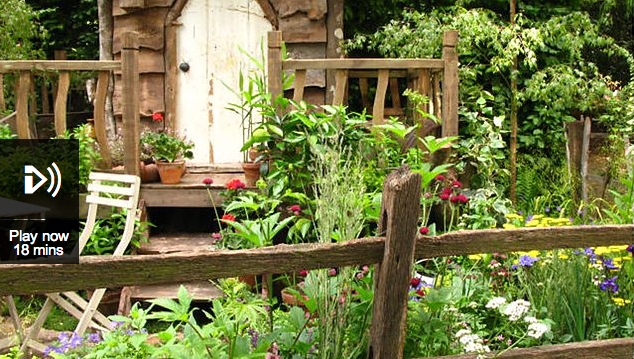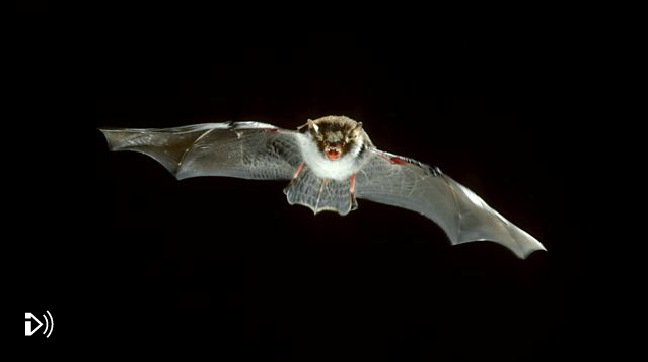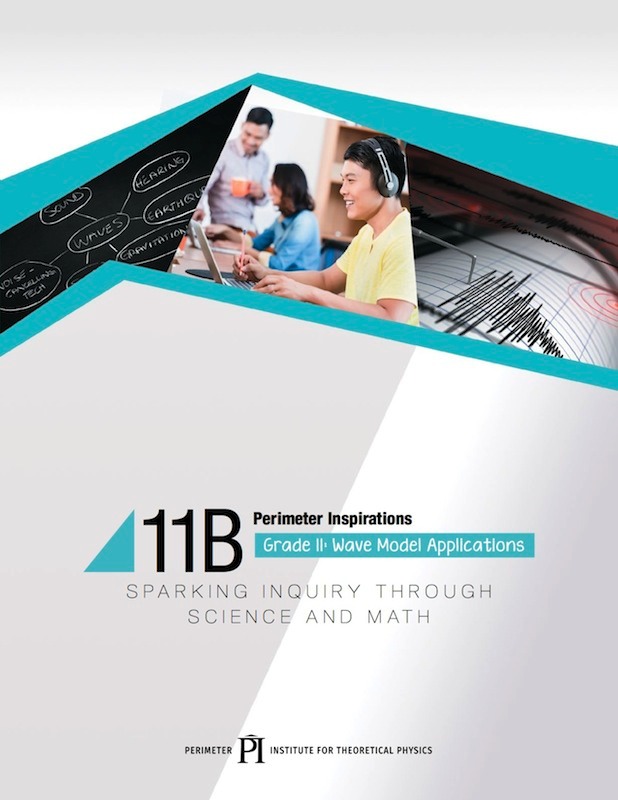Waves and Sound Resources
Copyright on all materials on this site is retained by the authors. You are granted a limited license to reproduce these resources for classroom use, provided the copyright notices are not removed. Charging a fee for these resources, or distributing them in any way outside your classroom, is prohibited.
Vibrations and Waves
Wave Interactions
Applications of Waves
Discovery: The sound of deafness
Discovery is a BBC Radio 4 programme that explores today's most significant scientific discoveries and talks to the scientists behind them.
Nine million people in the UK alone have significant hearing problems. The mechanisms in our ears that help us hear are incredibly sensitive and are easily damaged by environmental hazards such as loud noises and chemicals or simply the passage of time.
Despite the fact that many of us will gradually lose our ability to hear as we as a society grow older, many of us don’t actually know that much about the causes and consequences of deafness.
What does the world sound like to a deaf person? How do the brain and ears work together to make sense of sound? And how far have scientists come in helping to restore impaired hearing?
Nine million people in the UK alone have significant hearing problems. The mechanisms in our ears that help us hear are incredibly sensitive and are easily damaged by environmental hazards such as loud noises and chemicals or simply the passage of time.
Despite the fact that many of us will gradually lose our ability to hear as we as a society grow older, many of us don’t actually know that much about the causes and consequences of deafness.
What does the world sound like to a deaf person? How do the brain and ears work together to make sense of sound? And how far have scientists come in helping to restore impaired hearing?
Discovery: Green Ears
Discovery is a BBC Radio 4 programme that explores today's most significant scientific discoveries and talks to the scientists behind them.
Many of us think of our gardens, parks and green urban spaces as retreats and oases of calm from our busy lives, others think of them as places for fun, socialising and play, whereas there are some who think of them as just hard work.
Whatever we think, we usually think of them in terms of what they look like, even maybe what they smell like. But in Green Ears, Professor Trevor Cox explores what they sound like.
Acoustics play a massive part in our sense of space. With loud noises like traffic or industrial works actually causing us harm. The right sorts of sounds, at the right volume and pitch though can really help to enhance our sense of tranquility.
So what are the sounds we most like to hear in our gardens? Water tricking, birds singing, bees buzzing, wind rustling leaves and children playing (quietly or from a distance!) can be as calming as beautiful planting and clever layout. But it has to be the right trickle of water, get it wrong and you may find you want to rush to the loo! too loud and the sense of Niagara Falls in your small back yard can feel threatening.
Many of us think of our gardens, parks and green urban spaces as retreats and oases of calm from our busy lives, others think of them as places for fun, socialising and play, whereas there are some who think of them as just hard work.
Whatever we think, we usually think of them in terms of what they look like, even maybe what they smell like. But in Green Ears, Professor Trevor Cox explores what they sound like.
Acoustics play a massive part in our sense of space. With loud noises like traffic or industrial works actually causing us harm. The right sorts of sounds, at the right volume and pitch though can really help to enhance our sense of tranquility.
So what are the sounds we most like to hear in our gardens? Water tricking, birds singing, bees buzzing, wind rustling leaves and children playing (quietly or from a distance!) can be as calming as beautiful planting and clever layout. But it has to be the right trickle of water, get it wrong and you may find you want to rush to the loo! too loud and the sense of Niagara Falls in your small back yard can feel threatening.
Discovery: The Acoustics of World Instruments 1/3
Discovery is a BBC Radio 4 programme that explores today's most significant scientific discoveries and talks to the scientists behind them.
From Mongolian throat singing to the grand opera houses of Europe and folk singing in the fields of Bulgaria, Trevor Cox examines how the human voice makes sound.
He hears of a study in Australia that suggests Wagner may have chosen specific vowel sounds to help female singers battle against vast orchestral forces. And how Mongolian throat singers took inspiration from the multiple sounds they heard in the wind.
From Mongolian throat singing to the grand opera houses of Europe and folk singing in the fields of Bulgaria, Trevor Cox examines how the human voice makes sound.
He hears of a study in Australia that suggests Wagner may have chosen specific vowel sounds to help female singers battle against vast orchestral forces. And how Mongolian throat singers took inspiration from the multiple sounds they heard in the wind.
Discovery: The Acoustics of World Instruments 2/3
Discovery is a BBC Radio 4 programme that explores today's most significant scientific discoveries and talks to the scientists behind them.
What makes the sound of a clarinet different to an oboe or a recorder? Trevor Cox — acoustic engineer and saxophone player — examines the science of wind instruments.
He learns how playing the didgeridoo could help the best jazz saxophonists. And discovers the shared science between simple squeeze boxes and Asian free reed instruments.
What makes the sound of a clarinet different to an oboe or a recorder? Trevor Cox — acoustic engineer and saxophone player — examines the science of wind instruments.
He learns how playing the didgeridoo could help the best jazz saxophonists. And discovers the shared science between simple squeeze boxes and Asian free reed instruments.
Discovery: The Acoustics of World Instruments 3/3
Discovery is a BBC Radio 4 programme that explores today's most significant scientific discoveries and talks to the scientists behind them.
Trevor Cox explores how percussion and string instruments make their own particular sounds.
He finds surprising scientific connections between a Stradivarius violin, singing bowls of Tibet and playing a saw used for cutting wood.
And he learns how the rise of the oil industry in World War II gave birth to the hand crafting of Steel Pans in the Caribbean — a skill that is attracting scientific analysis today.
Trevor Cox explores how percussion and string instruments make their own particular sounds.
He finds surprising scientific connections between a Stradivarius violin, singing bowls of Tibet and playing a saw used for cutting wood.
And he learns how the rise of the oil industry in World War II gave birth to the hand crafting of Steel Pans in the Caribbean — a skill that is attracting scientific analysis today.
In Our Time: Echolocation
In Our Time is a wonderful series on BBC Radio 4.
Melvyn Bragg and guests discuss how some bats, dolphins and other animals emit sounds at high frequencies to explore their environments, rather than sight. This was such an unlikely possibility, to natural historians from C18th onwards, that discoveries were met with disbelief even into the C20th; it was assumed that bats found their way in the dark by touch. Not all bats use echolocation, but those that do have a range of frequencies for different purposes and techniques for preventing themselves becoming deafened by their own sounds. Some prey have evolved ways of detecting when bats are emitting high frequencies in their direction, and some fish have adapted to detect the sounds dolphins use to find them.
Melvyn Bragg and guests discuss how some bats, dolphins and other animals emit sounds at high frequencies to explore their environments, rather than sight. This was such an unlikely possibility, to natural historians from C18th onwards, that discoveries were met with disbelief even into the C20th; it was assumed that bats found their way in the dark by touch. Not all bats use echolocation, but those that do have a range of frequencies for different purposes and techniques for preventing themselves becoming deafened by their own sounds. Some prey have evolved ways of detecting when bats are emitting high frequencies in their direction, and some fish have adapted to detect the sounds dolphins use to find them.
Perimeter Inspirations: Grade 11 Wave Model Applications
Wave Model Applications is an inquiry-based educational resource. Hands-on activities focused on waves explore the far-reaching extent of the wave model for understanding and manipulating natural phenomena. Students are introduced to the basic properties of waves and how they are used to solve problems.
Opportunities are provided throughout the resource for students to explore the breadth of technologies that use wave phenomena to reduce noise, image ship wrecks, study earthquakes, and detect gravitational waves. The fundamental properties of sound are also explored to build a deeper understanding of how the human ear functions.
This digital resource is designed to excite learning in Science, Technology, Engineering, and Math (STEM), with an emphasis on global competencies—including critical thinking and problem solving, collaboration, and communication.
As usual with Perimeter Institute products, this free downloadable resource comes in both PDF and Microsoft Word versions, so you can customize it if you want to.
I used the draft version of this last year, trying most of the activities. I think they are worthwhile. I did find the time estimates a bit optimistic — allow for up to 50% more time to complete an activity than the lesson plan suggests.
Opportunities are provided throughout the resource for students to explore the breadth of technologies that use wave phenomena to reduce noise, image ship wrecks, study earthquakes, and detect gravitational waves. The fundamental properties of sound are also explored to build a deeper understanding of how the human ear functions.
This digital resource is designed to excite learning in Science, Technology, Engineering, and Math (STEM), with an emphasis on global competencies—including critical thinking and problem solving, collaboration, and communication.
As usual with Perimeter Institute products, this free downloadable resource comes in both PDF and Microsoft Word versions, so you can customize it if you want to.
I used the draft version of this last year, trying most of the activities. I think they are worthwhile. I did find the time estimates a bit optimistic — allow for up to 50% more time to complete an activity than the lesson plan suggests.







Teaching Science